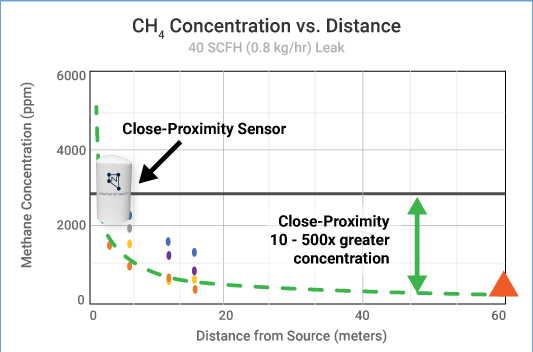Close-Proximity Continuous Monitoring™
NevadaNano’s Close-Proximity, Continuous Monitoring™ (CPCM™) architecture enables MethaneTrack™ to locate the source and calculate the rate of emissions with much greater accuracy than other monitoring solutions operating from a greater distance, thereby significantly improving detection and quantification.
Close-Proximity Continuous Monitoring™ is a Breakthrough in Explosive and Flammable Gas Monitoring
The key to close-proximity monitoring is ‘Intrinsically safe’ instrumentation endpoints. Intrinsically Safe means that MethaneTrack™ endpoints are engineered to prevent the ignition of flammable gases or vapors at explosive & flammable concentrations.
MethaneTrack™’s intrinsically safe certification ensures that the endpoint does not pose an ignition risk in the most hazardous locations (Zone 0, C1D1), making it the perfect choice for close-proximity monitoring in environments where safety is paramount. Close-Proximity Continuous Monitoring™ is the ability to place intrinsically safe endpoints near potential emission locations to measure the gas concentrations near the source. This results in greater location and quantification accuracy, as the short distance from the source to the endpoint decreases the impact of wind variations between the source and any more distant detector.
The figure below shows how Close-Proximity increases the gas concentration by up to 500 times due to reduced gas dispersion by the wind resulting in improved detection and quantification. In addition, the short distance between the source and the endpoint enables tighter location accuracy.
With Proximity Comes Accuracy
- CPCM™ is enabled by Intrinsically Safe endpoints
- Close-proximity sensing results in
- Higher gas concentrations
- Lower false positives
- More accurate localization of emission
- Distinguishing between fugitive and operational emissions
- Improved quantification

